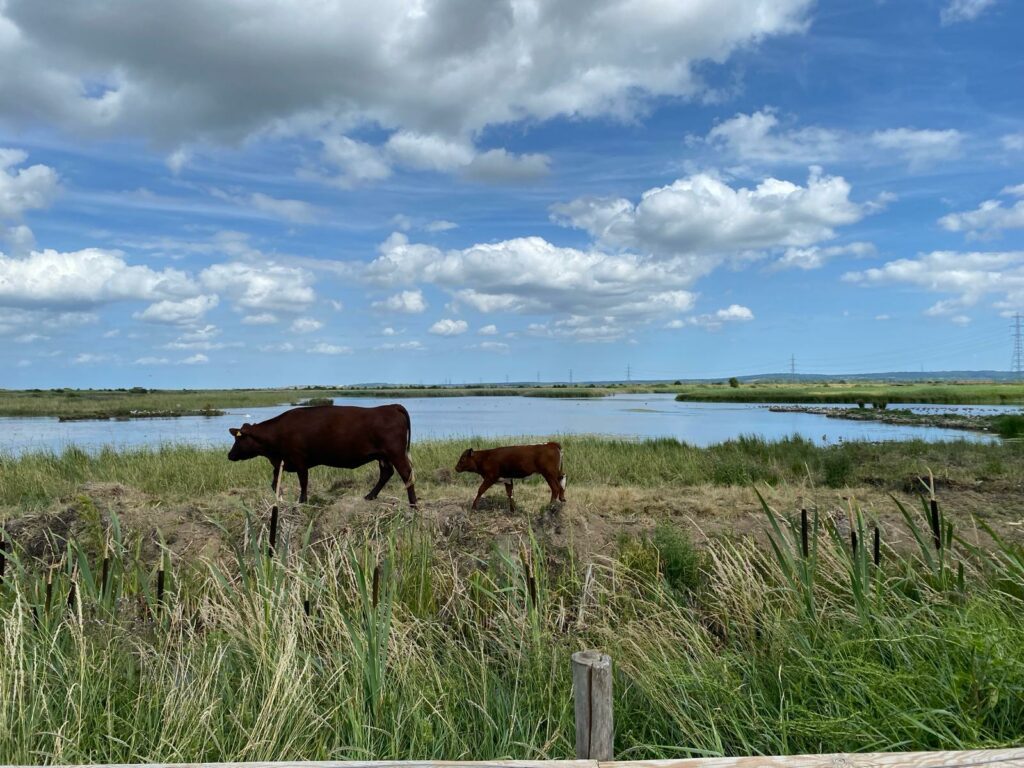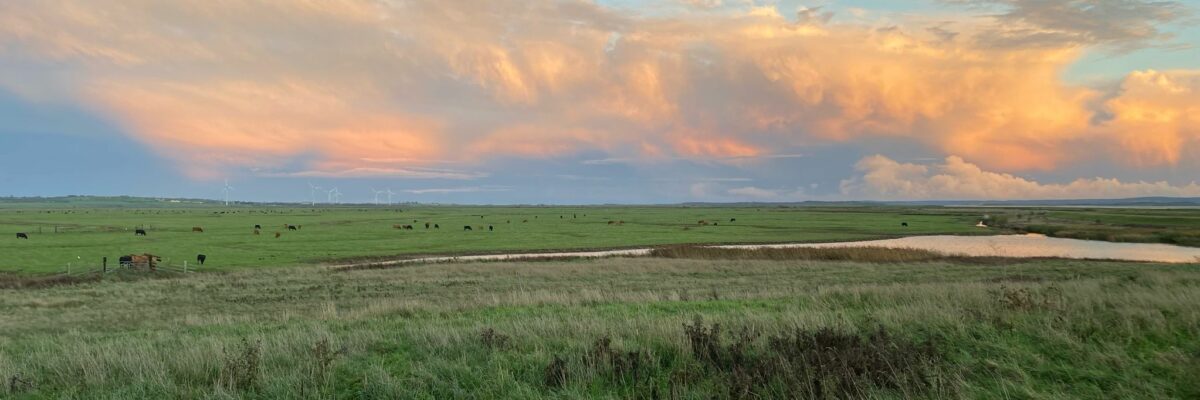The Challenges Our Coastal Habitats Face
27 March 2024
Coastal and Marine Officer Louise Lawton explores our Kentish coastal habitats, and considers how we can safeguard them for the future….
Kent and Medway have a diverse range of coastal habitats providing homes for a wide variety of wildlife. From vegetated shingle to mudflats and saltmarsh to chalk reefs, our coastal habitats protect our land from tidal surges and flooding, filter polluting nutrients, store carbon and provide us with places to relax and improve our health. They also provide jobs for us thorough industries ranging from fisheries to coastal tourism.
The largest area of our coast consists of coastal floodplain and grazing marsh – over 14,000 ha of it – and isn’t truly defined as a single habitat per say, but a landscape type which supports a variety of habitats: the defining features being hydrological and topographical rather than botanical.
Grazing marsh is defined as periodically inundated pasture or meadow, typically with ditches or rills containing standing brackish or fresh water. Most sites are dominated by neutral-soil grasses with ditches having higher plant diversity and the habitat supports bird species of high conservation value, typically breeding wader birds such as snipe, redshank, lapwing and overwintering sites for birds such as the curlew. The ditches are particularly important habitat for a variety of insects such as dragonflies, soldier flies and beetles; most notably the great silver diving beetle.
The North Kent Marshes between Gravesend and Whitstable represents the most extensive and joined up example of this habitat in Kent and Medway, with a patchwork of ownership from private landowners, farmers and environmental non-governmental organisations (NGOs). The key management practices on grazing marsh are grazing, particularly by cattle and sheep, and water level control.

Large areas of grazing marsh in Kent have been lost due to land drainage, conversion to arable, and development during the 20th century, but recent work is turning this around. Many areas lack the focused management that breeding waders require, so high quality grazing marsh is a fragmented habitat. Ground nesting birds on grazing marsh are particularly vulnerable to the effects of mammalian predation, particularly from foxes. Invasive non-native species that impact on grazing marsh include floating pennywort and crassula, which severely affect ditch fauna and flora, and American mink, which is a key factor in the decline of water vole populations. Another pressure for the birds on this habitat is from recreational disturbance, mainly from walkers and projects such as Bird Wise are aimed at raising awareness of sensitivities in these areas and ways the public can minimise disturbance.
This habitat has been under threat indirectly from coastal squeeze, where rising sea levels are putting pressure on other priority habitats below the sea wall such as mudflat and saltmarsh and there is seen a need to allow these habitats to migrate into areas of coastal and floodplain grazing marsh through processes such as managed retreats. An additional pressure is around water availability, both in terms of the region being drought stressed, with marshes drying out and in terms of poor water quality. This impact will become increasingly severe due to the impacts of climate change.
There are opportunities to restore and connect existing grazing marshland. This is where the need to engage coastal landowners and communities plays its part. By identifying priority areas within the Local Nature Recovery Strategy, we can look at the gaps and try to find out how we can help landowners and managers restore their coastal grazing marsh, increasing biodiversity and connecting fragmented habitats along Kent’s coastline.
Interested in helping us? Then please drop us an email at makingspacefornature@kent.gov.uk
Popular articles
Proposed approach for shortlisting priorities for nature recovery published
The Making Space for Nature project has been working with stakeholders to…
MS4N first milestone completed! Areas of importance for biodiversity mapped.
The MS4N project is delighted to have completed its first project milestone…
Haven’t been able to get to a workshop – you can still get involved!
There’s still one workshop of the pressures and priorities series left –…

